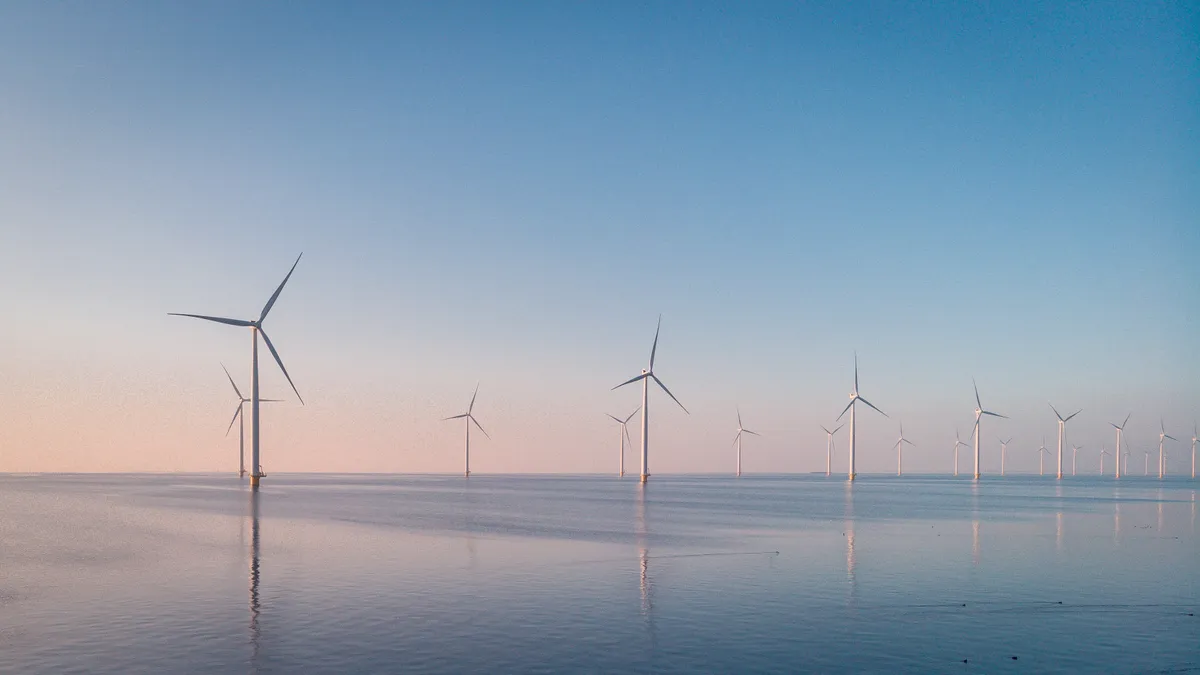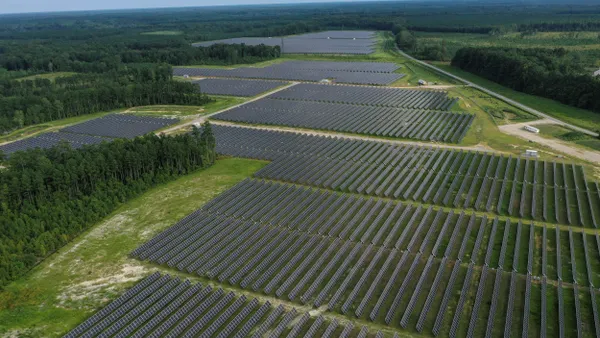UPDATE: Sept. 18, 2023: Both houses of the California legislature have approved the central buyer legislative package. The Senate amended the bill before passing it 29-10 on Sept. 14 and sent it back to the Assembly, which voted 62-16 the same day to approve those amendments. The legislation now goes to Gov. Gavin Newsom, D, who is expected to sign it into law by October 16.
“We appreciate all of the work the Legislature and Governor have done to put this new market on its feet,” said Molly Croll, the Pacific offshore wind director for American Clean Power-California. “A ‘central procurement’ mechanism provides the market clarity needed for offshore wind to take off.”
Dive Brief:
- An agreement between California Gov. Gavin Newsom, D, and state legislators for a legislative package that includes creating a central power buyer for the state could give the West Coast’s nascent offshore wind industry a significant boost, clean energy advocates say.
- The governor and lawmakers announced the agreement on Assembly Bill 1373 Aug. 31, noting that the proposal includes the creation of a central buyer to procure clean electricity, “focusing on sources like offshore wind and long-duration storage to diversify our energy portfolio.”
- “It’s hugely important for the offshore wind industry,” Molly Croll, director of Pacific coast offshore wind at American Clean Power, said. “Right now, it’s very difficult for any developer… to see a viable pathway to market and offtake,” she added.
Dive Insight:
California has adopted preliminary planning goals to install between 2 GW and 5 GW of offshore wind by 2030 and 25 GW by 2045. In December, the U.S. Department of the Interior’s Bureau of Ocean Energy Management held its first offshore wind lease sale in the Pacific Ocean. The sale drew winning bids from five companies totaling $757.1 million — lower bid prices than those seen on the East Coast, which experts say indicate uncertainties with the West Coast offshore wind market, but could also be a boon to ratepayers in the long run.
Industry experts say that to move forward, project developers will need to see clearer market signals on how the state plans to procure offshore wind.
The new legislative agreement could, if approved, help do just that, clean energy advocates say. It would involve creating a central buyer for power procurement, accelerating permitting for electric transmission projects, and strengthening the state’s strategic reliability reserve, a pool of resources that can kick in to support the grid during extreme conditions, like heat waves.
Electricity procurement in California is primarily based around three regulatory proceedings – integrated resource planning, resource adequacy, and the renewables portfolio standard, Croll said. As part of the integrated resource planning effort, the California Public Utilities Commission assesses the state’s needed portfolio of resources, individual power providers’ plans, and identifies any gaps, following which the agency might order procurement of resources by load-serving entities.
This new agreement, however, would allow for central procurement by the state’s Department of Water Resources, she added. In this scenario, the department would sign a power purchase agreement with an offshore wind owner and operator, and the CPUC would determine whether the contract is just and reasonable before execution, according to Croll. The department would recover the costs of the contract through a non-bypassable charge approved by the commission, and paid for by customers of all state load-serving entities.
“So it’s creating a new central procurement function within a state entity… with the capability of procuring large-scale, very long lead-time resources, in some cases utilizing new technologies for the benefit of all [load-serving entities] in the state,” she said.
For most clean energy resources, like solar and battery storage, this wouldn’t change a lot. But it could make a difference for large-scale resources like offshore wind that have long lead times, and can be challenging for individual power providers to procure on their own without state support, according to Croll.
Offshore wind developers and California’s five leaseholders in particular might find it difficult to see a viable pathway to market and offtake, given the number of power providers and the typical timeframe and process for power procurement in California, she said.
“It’s very hard to have confidence in a pathway to market and without that, developers would be really struggling to be making the next step of major investments,” like permitting and port upgrades, according to Croll.
While a mechanism like the central buyer framework is by no means a guarantee of procurement, “it’s hugely important as a practical tool and as a market signal,” Croll said.
Offshore Wind California Executive Director Adam Stern also commended the agreement in a statement, noting that it would help get the state to its 25 GW of offshore wind goal by 2045. Procuring at scale is one of the key next steps California needs to bring offshore wind online, Stern said.
“AB 1373 will establish a robust mechanism to facilitate procurement and offer a clear path to market for diverse clean energy such as offshore wind and other resources,” he added.















